Snagged that stylish floor lamp but feel like something's missing?
Let's talk about finding its other half – the lampshade.
Wondering how to match the lampshade of the ideal shape, material, and pattern to your lamp and room?
Dive into our guide...
Key Takeaways: How to Choose Lampshade for Your Floor Lamp
- Getting the Shade Size Right
- Getting the shade shape right
- Choosing a lampshade material
- Choosing a lampshade Lining
- Choosing color or pattern for a lampshade
- Matching the Shade Size With the Room
Getting the Shade Size Right
Here's a simple guideline to follow:
Width
Ideally, the lampshade should be roughly twice as wide as the lamp base. For most floor lamps, a shade width of 16 to 20 inches works well, providing balance and adequate light diffusion.
Height
The height of the lampshade should typically be about one-third to one-half the height of the lamp base. A common range for floor lamp shades is between 10 to 15 inches tall. This size ensures the bulb and mechanical parts are neatly covered, enhancing the lamp's visual appeal.
Room Size Consideration
Choose a larger lampshade for big rooms with high ceilings. The lampshade should be 18 to 20 inches wide and 14 to 15 inches tall. This will make a bold statement and help the lamp stand out as a focal point.
In small rooms or spaces with low ceilings, use a smaller lampshade. The lampshade should be around 16 inches wide and 10-12 inches tall. This will help it blend in better without dominating the room.
Getting the Shade Shape Right
Let's explore the variety of shapes available and see which ones are reigning favorites for floor lamps.
Popular Shapes for Floor Lamps:
Drum: Known for its modern and versatile design, the drum shape is a top choice for floor lamps. Its wide, cylindrical form distributes light evenly, making it ideal for general room illumination.
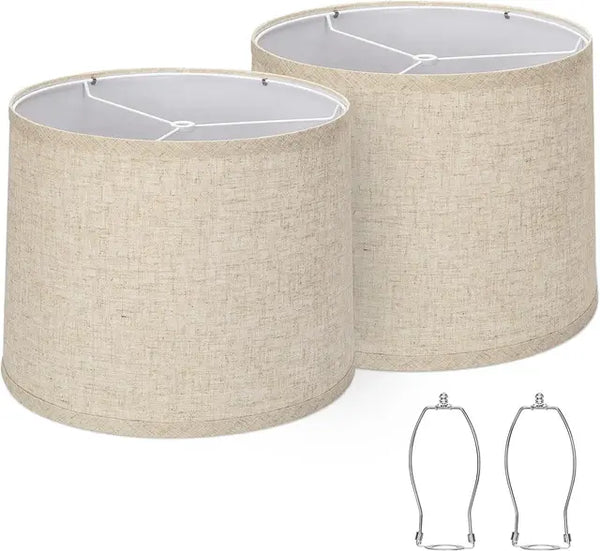
Empire: Empire shades have a classic design that narrows from top to bottom, ideal for directing light downwards. This makes them perfect for reading or task lighting beside a cozy chair.
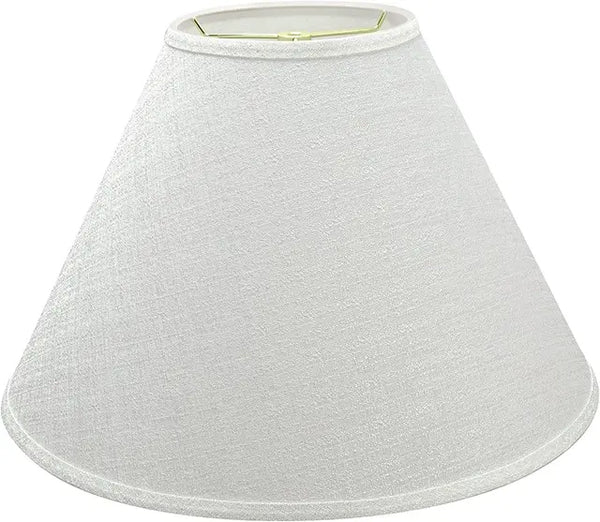
Straight Empire: This lampshade has straight sides for a modern look. It directs light downwards, making it ideal for floor lamps. These lamps are used for tasks that require focused lighting.

Other Shapes:
Round: Offers a traditional look, best for softer, diffused lighting.
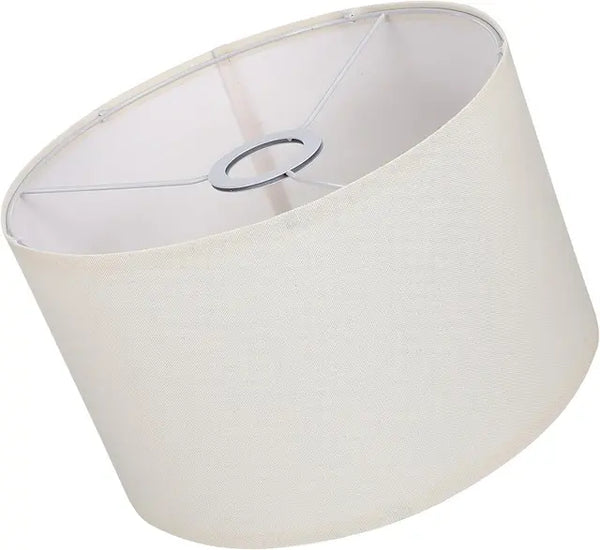
Bell: Curves outward and then in, ideal for adding a decorative touch.
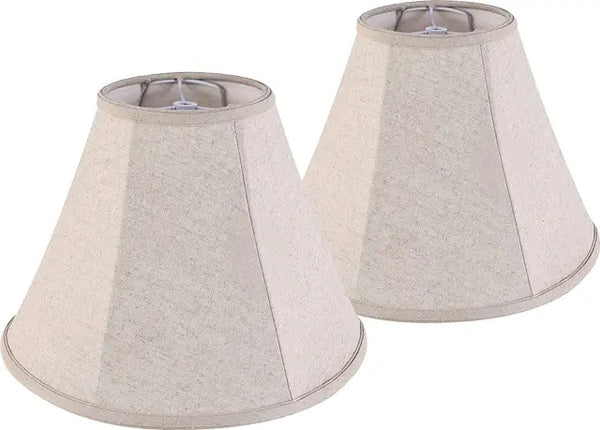
Square and Rectangular: These shapes provide a structured, modern look and work well in contemporary settings.


Oval: A softer version of rectangular shades, suitable for blending in any decor.
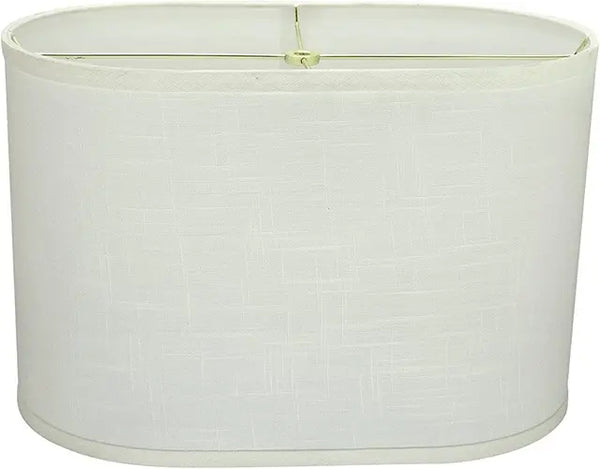
Hexagon: Adds a unique geometric touch to a room, perfect for statement pieces.

Cone: Narrow at the top and broad at the bottom, excellent for spotlighting areas.
Choosing a Lampshade Material
Let’s delve into how each material contributes to your space's ambiance.
Cotton: Cotton lampshades offer a crisp and clean look, perfect for casual or minimalist decor. They emit a soft, diffused light that's ideal for creating a relaxed environment.
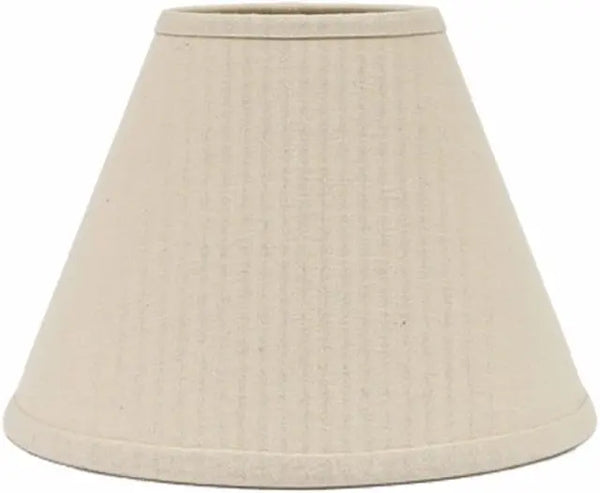
Linens: Linens, with their natural texture, add a touch of rustic elegance. They allow more light to pass through than cotton, brightening the room with a warm, inviting glow.
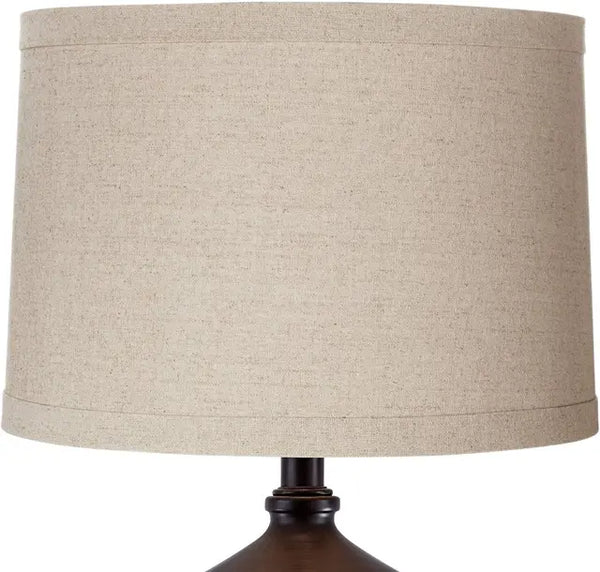
Silks: Silk shades are the epitome of luxury, casting a rich and subtle light. They’re best suited for formal spaces or areas where you want to add a soft, sophisticated touch.
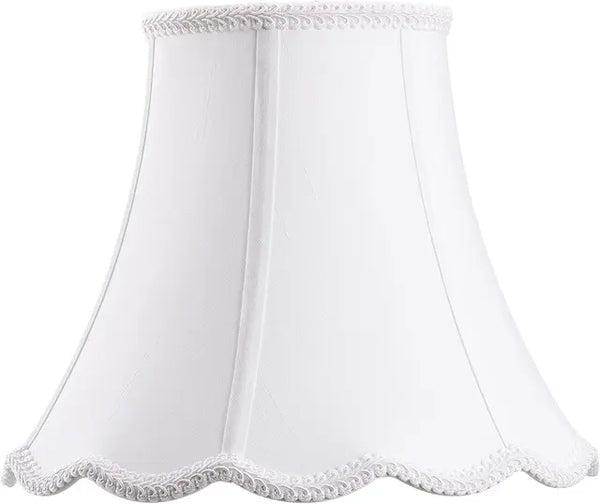
Parchments: Parchment lampshades have a classic appeal, emitting a warm, muted light that can make any room feel cozy and timeless.

Glass: Glass shades vary greatly but generally provide excellent light diffusion, especially if frosted or etched. They're ideal for spaces requiring bright, clear light, such as reading areas or workspaces.

For those who are specifically looking for floor lamps that provide a gentle, ambient glow, explore our selection of soft light floor lamps designed to create the perfect atmosphere in any room.
Choosing a Lampshade Lining
Let's explore how different linings influence both functionality and style.
Gathered Lining
Gathered Lining: Softens light, introducing a warm, inviting glow. Its texture adds a layer of visual interest, perfect for spaces that aim for a cozy ambiance.
Balloon Lining
Balloon Lining: This lining scatters light evenly, minimizing harsh shadows. Ideal for areas requiring a gentle, diffuse light source.
Exterior Lining
Exterior Lining: Not just for the inside, this option impacts the lampshade's outer appeal. It's a strategic choice for those looking to complement or contrast with room decor.
Paneled Balloon Lining
Paneled Balloon Lining: Offers a unique blend of shadow and light, creating a dramatic effect. Suits spaces that benefit from a bold, architectural lighting style.
Pleated Lining
Pleated Lining: Merges elegance with function. The pleats play with light, casting intricate patterns. It's a fit for rooms that embrace a classic or sophisticated look.
Choosing Color or Pattern for a Lampshade
Harmonize or Contrast
Harmonize: Aim for colors or patterns that echo elements in your room for a cohesive look. If your room is a symphony of blues, a lampshade in a similar hue can add another note to that melody.
Contrast: For a dash of drama, pick a lampshade that stands out. A vibrant pattern in a monochrome room adds a focal point that sparks conversation.
Lighting Effects
Darker Shades: They create moody, subdued lighting perfect for a den or a cozy reading corner. Remember, dark colors absorb light, so these shades are not your go-to for task lighting.
Lighter Shades: Brighten the room and diffuse light broadly, ideal for spaces where you work or play. Think of it as wearing a white shirt on a sunny day; it reflects light, illuminating the space around you.
Room Decor and Mood
Match the Mood: A playful pattern might not sit well in a room with a serious, studious vibe. Similarly, a formal, geometric pattern could clash in a laid-back, bohemian space.
Decor Dialogues: Let your lampshade talk to the rest of your decor. A floral pattern could complement natural elements like wood and stone, while a sleek, solid color pairs well with modern, minimalist designs.
Matching the Lampshade Size and Style With the Room
The right lampshade can transform a room from blah to wow with just a flick of the switch. Let's dive into how to nail the match.
Size Does Matter
Visual Weight: A lampshade should balance with the base and the room's size. In a spacious room, a timid, small lampshade might look lost, while a too-large shade in a cozy room might overwhelm.
Height and Width: The lampshade's height should be about two-thirds the height of the base. Its width? Ideally, it should extend just beyond the base's widest part. This keeps the lamp looking well-proportioned, rather than top-heavy or awkwardly slim.
Style Harmony
Room's Theme: Your lampshade should whisper sweet nothings to your room's theme. Got a minimalist vibe? A sleek, simple shade fits like a glove. Vintage charm? A lampshade with texture or a period design can amplify that aura.
Color Scheme: It's not just about matching colors but also about complementing contrasts. A lampshade in a color that pops can add a delightful twist to your room, while shades in harmonious colors can soothe and unify the space.
Related Articles: Where to Put a Floor Lamp: Best Spots
Before You Go
Ready to brighten your space with the perfect floor lamp and lampshade combo? Explore more tips and tricks in our comprehensive Floor Lamp basic guide.
Light up every corner of your home with confidence!






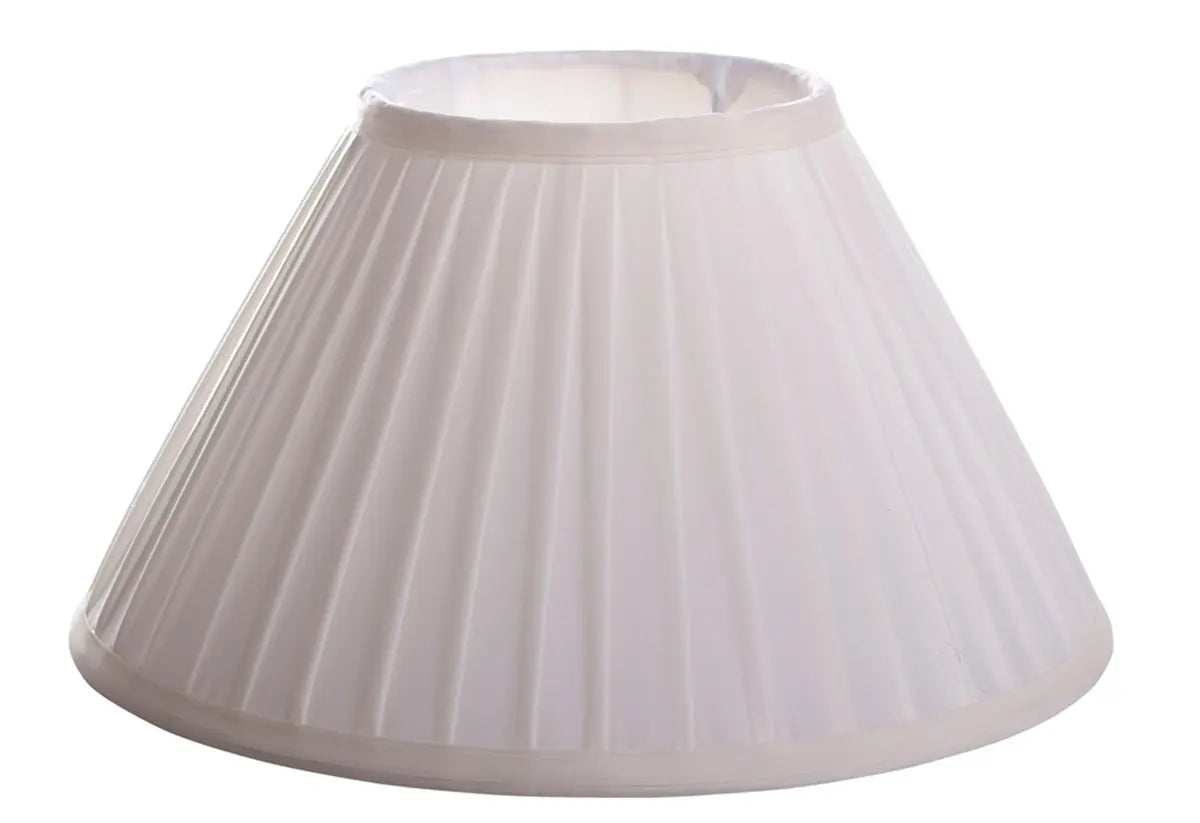
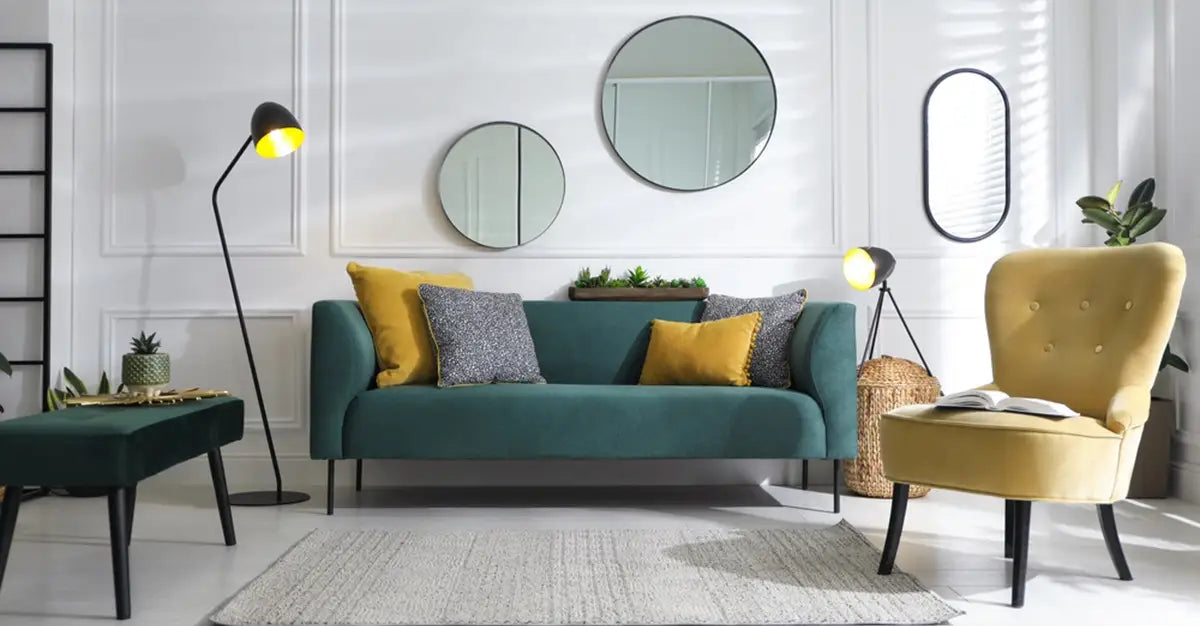
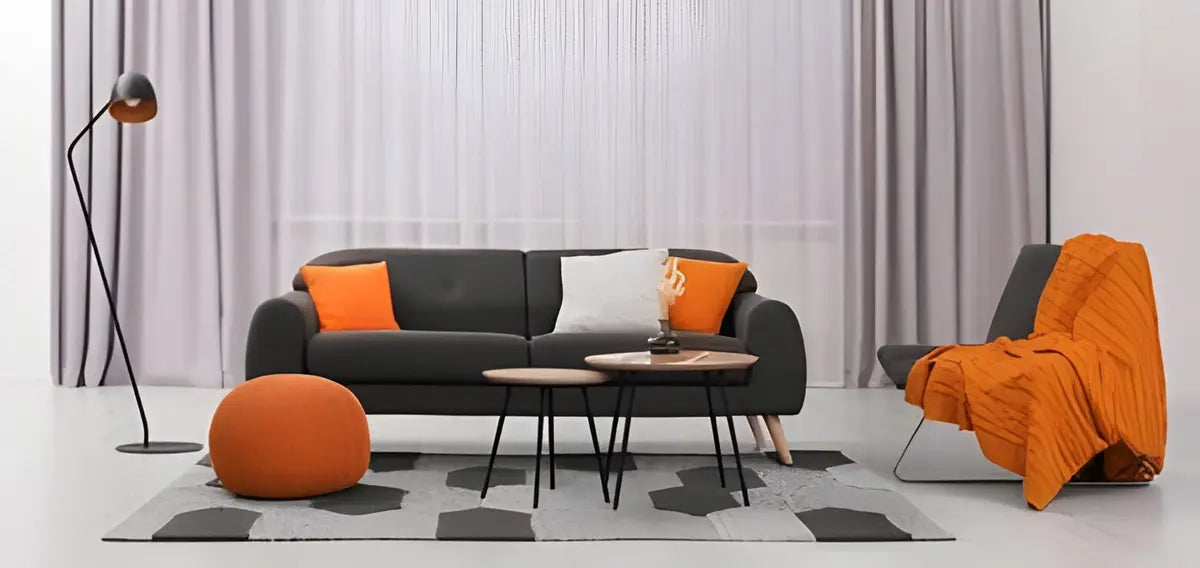
Leave a comment
All comments are moderated before being published.
This site is protected by hCaptcha and the hCaptcha Privacy Policy and Terms of Service apply.